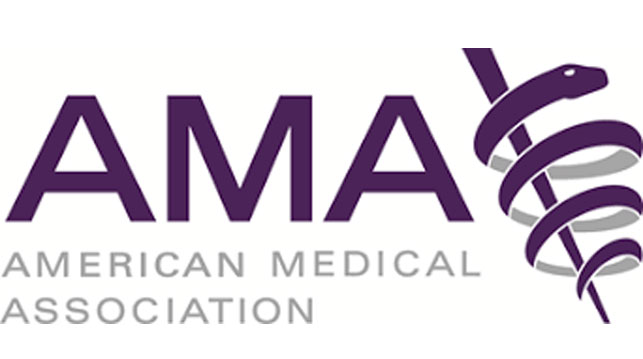
As we continue on with our series on less-common academic citation formats, we’re starting to see a trend: citation formatting really depends on your field, and specific fields have specific requirements. That makes sense, as you might have different priorities when citing, and it’s also a way to show that you “belong” in your field of study—that is, you’ve done the work and you know the secret formatting handshake.
The next style we’re looking at is another of these specialist fields: medicine. The American Medical Association (AMA) has a particular style it prefers authors to follow when writing, and pre-med and medical students, doctors in residency, and researchers may all be asked to use this.
Get a free sample proofread and edit for your AMA referencing.
Two professional proofreaders will proofread and edit your AMA referencing.
What Is AMA Style?
The first AMA style guide came out in 1962; it was only 68 pages long and was meant for the AMA’s in-house editorial staff as a guideline when preparing manuscripts for publication in their journal. Soon, though, authors started requesting copies, and various nuances of writing started filtering in, needing to be addressed. Today, the 10th edition of the guide has more than a thousand pages!
AMA is another numeric referencing style and it’s extremely similar to our friend Vancouver style. Both label references with numbers in their order of appearance in the text, and both format their reference list in the corresponding numerical order.
A key difference is that AMA style uses Roman superscript numbers, placing them outside commas and periods and inside semicolons and colons. If you use more than one citation, separate the numbers with a comma and no space. If you use a series of references in order, separate them with a hyphen. Repeating a reference later in the paper? Give it the same number it had the first time, and only list it once in the reference page.
Then create your reference list in the corresponding order, giving all bibliographic information.
Sounds simple, right? Yup! That really is all there is to it.
Examples of AMA In-Text Citations
Here’s a few examples of AMA in-text citations:

As you can see, it’s pretty straightforward—just number up those references in order! As you place references within your manuscript, start keeping a numbered log of them on your growing references page and you’re all set.
Speaking of reference pages…
General Rules for AMA Reference Pages
Much like in-text citations, AMA bibliographies are very similar to Vancouver style. In each entry, you’ll give the surname of the author and the author’s initials, with no periods. Write out every author up to six. If there are more than six authors, write out the first three, then use “et al.”
In article titles, you’ll only capitalize the first word and any proper nouns and capitalized abbreviations.
Italicize the titles of journals and books, but not article titles.
Whenever you’re providing page numbers, provide all the relevant numbers—don’t abbreviate. So, for example, a page range would read 341-348, not 341-8.
Journals
The titles of journals should be abbreviated using the accepted Index Medicus or Medline abbreviation (search the journal title here to find the accepted abbreviation).
After providing the year of a publication, stop using spaces. That’s right, no spaces after that semicolon! All the journal details run together, with numbers touching semicolons touching parentheses touching dashes. It’s a little strange at first, but you’ll get used to it!
Provide the year, volume, issue, and page numbers for the journal to allow readers to quickly locate the correct article, in the format: YEAR;vol(iss):page-page.
If there’s no issue number, specify the month after the year, as in: 2014 Dec.
Books
Books follow a similar format to journals. Use the author’s surname and initials, write out the title of the book using headline-style capitalization, and give the place of publication, publisher, and year.
For a book chapter, give the chapter’s authors, the title of the chapter in sentence case (capitalizing only the first word and any proper nouns), then give the publication information of the book, including the editor if applicable.
Online Sources
For online sources, give as much information as possible, including the date of access. Many internet sources don’t have a listed author; in these cases (and when you don’t have the author of a report or other source), list the organization as the author.
Let’s look at some examples!
Example of AMA Bibliography
1. Stoker A, Jacobs PE, Brahms CJ, Langley K, O’Hare JL. Pseudoscientific babble: Comparison of evidence and fancy in current scholarship. J Histotechnol. 2014 Dec;37(4):115-124.
2. Kelly J, Zhao L, Liu C, Fishbone D, Krazinski M. Searching for accuracy in the ramblings of a guy on a soapbox. Can J Rural Med. 2014 Fall;19(4):135-141.
3. Sigman N. A series of scribblings. In: Grey R, Hanx JK, Stephenson AJ, editors. Fundamentals of Academic Rigor. 10th ed. San Francisco, CA: Some Publisher; 2013:732-786.
4. Buckingham Q. Pretending I Know What I’m Talking About: Fundamentals, Methods, and Clinical Applications of Academic Writing. 2nd ed. Philadelphia, PA: Another Press; 2012.
5. Association of Crazed Researchers. Standards of Practice. 2011. http://www.notawebsite.com/wetried. Accessed February 25, 2019.
6. Vijay PK, Fitzwilliam SK. We’re right and you’re wrong: A literature review of referencing mayhem. J Aca Writ.1999;42(1):209-238. doi: 10.1038/nphys1170
These general guidelines and examples should get you well on your way to appropriately formatting your next medical paper. If you run into some issues, you can reach out to a professional editor who’s experienced with all kinds of formatting styles, like the experts at Proofreading Pal! Plus, the AMA editors produce a handy blog that discusses many tips, tricks, and style nuances to help you on your adventures in medical writing. Check it out, and happy referencing!
Kate S.
Get a free sample proofread and edit for your AMA referencing.
Two professional proofreaders will proofread and edit your AMA referencing.
Get a free sample proofread and edit for your document.
Two professional proofreaders will proofread and edit your document.
We will get your free sample back in three to six hours!